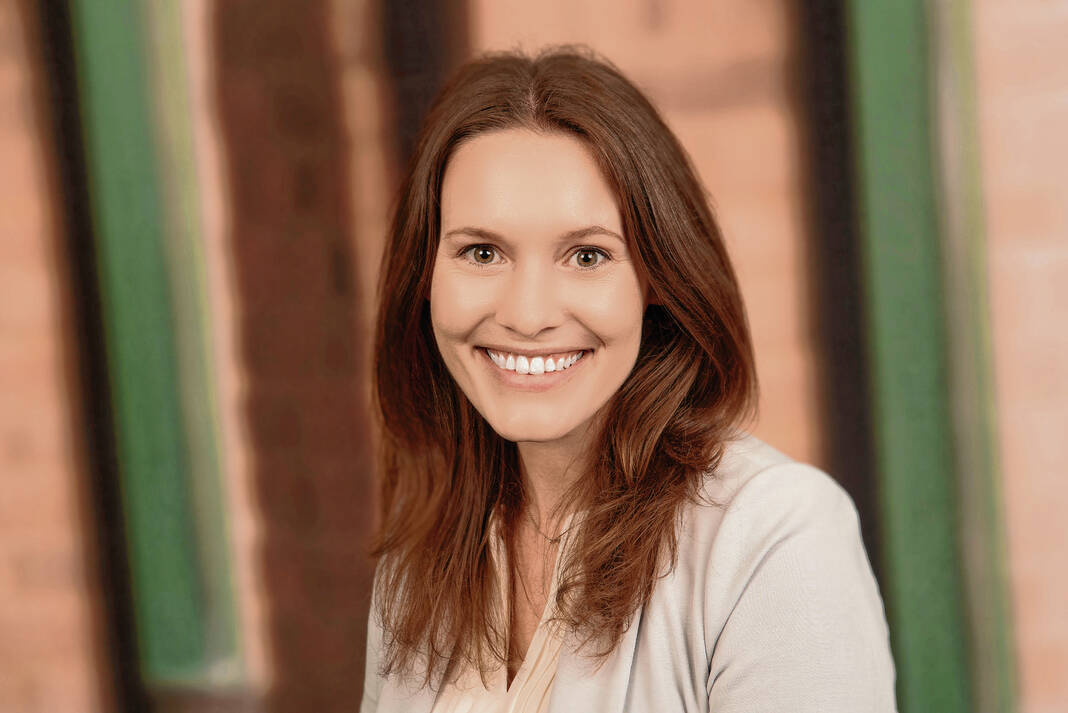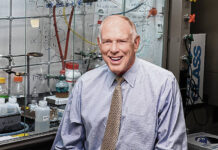When a person concludes that recovery from a major illness such as cancer is not in the cards, the script flips a bit. He or she switches from deferring to the expertise of specialists to being in the driver’s seat.
That’s the model Our Hospice of South Central Indiana employs in its treatment of patients. A team of caregivers representing various aspects of care takes its cue from what the patient wants.
“We meet patients where they are,” says medical director Dr. Leigh Anderson. “We want to identify the patient’s goals, find out about their hopes and worries.”
Anderson is a new face for Our Hospice, which announced her appointment as medical director in September. She received her doctor of medicine and her hospice and palliative medicine fellowship from Indiana University School of Medicine and completed her residency in internal medicine at St. Vincent Hospital.
“Our entire staff, patients, and families have already been impressed by the leadership and expertise that Dr. Anderson has brought to our organization,” Our Hospice president Laura Leonard said when Anderson’s appointment was announced.
The care team for an Our Hospice patient consists of a physician, registered nurse, nurse practitioner, home health aide, social worker, chaplain and volunteer. Such a group is equipped to meet a patient’s medical needs, but also spiritual and emotional needs, as well as such practical considerations as bathing, grooming, convenient placement of personal effects and comfort.
The team cares for the patient in his or her home or residence facility in most circumstances. Occasionally, a patient may stay at the Our Hospice Center at 2626 17th St. in Columbus under any of three circumstances: a crisis episode at home, a caregiver needing a break, or if a family is unsure what steps to take.
Our Hospice’s service area includes 16 counties and extends to the borders of Ohio and Kentucky. In addition to the Columbus facility, it has offices in Greensburg and North Vernon.
The concept of hospice has its roots in the Crusades of the 1000s A.D. The modern hospice movement was launched by British nurse, physician, social worker and writer Dame Cicely Saunders in 1967.
Our Hospice was founded in 1980. It was part of Columbus Regional Hospital until 2004, when it became an independent organization with its own board of directors and administrative staff.
“A group of very committed individuals came together in the 1980s to begin building this,” says Leonard.
She cites physicians of the era such as Sherm Franz and Ben Ranck, as well as her own predecessor Sandy Carmichael as prominent players.
Medicare and Medicaid reimburse nonprofit institutions such as Our Hospice.
Achieving independent status allowed the organization to fundraise. Three of its biggest fundraising events each year are a Labor Day weekend concert in Mill Race Park in Columbus, a golf outing in Greensburg, and a pageant in North Vernon.
Our Hospice offers services to a patient’s loved ones as well. Its Beginning Again group meets on Tuesdays, and a children’s grief group meets twice a month. In fact, one need not have had a loved one as an Our Hospice patient to participate.
Hospice care is a subcategory of palliative care. On its own, palliative care is a relatively recent field of heath care.
Our Hospice established a palliative care service line in 2019. It is for patients who are continuing curative treatment.
“These patients are medically complex,” says Anderson. “They’re seeing a lot of specialists, each with a narrowly focused area of concern. We can synthesize all that noise.”
The palliative care team can help a patient with decisions about medical interventions. If, say, someone wants to try to live long enough to see a grandchild be born, or see a family member get married, the team can help the patient see the benefits and burdens of various courses of action that might make that possible.
Providers of palliative care such as Our Hospice face a challenge stemming from the the field’s relative newcomer status. Palliative care is only reimbursed at 14 cents on the dollar. To that end, Our Hospice is building an endowment that currently has $2 million. The program also needs $450,000 annually for operating expenses.
The challenge is acute according to Anderson, because “the needs increase as the symptoms get worse.”
Our Hospice treats patients of all ages. Children generally come from Cincinnati Children’s Hospital or the Riley or Peyton Manning hospitals in Indianapolis.
Partnerships with the medical community are important to the organization. It meets with area clinics to develop criteria for when a patient should bet referred for palliative or hospice care.
The basic premise at Our Hospice is that a patient has entered a phase of care in which quality of life has taken precedence.
As Leonard puts it, “It’s not about giving up.”




